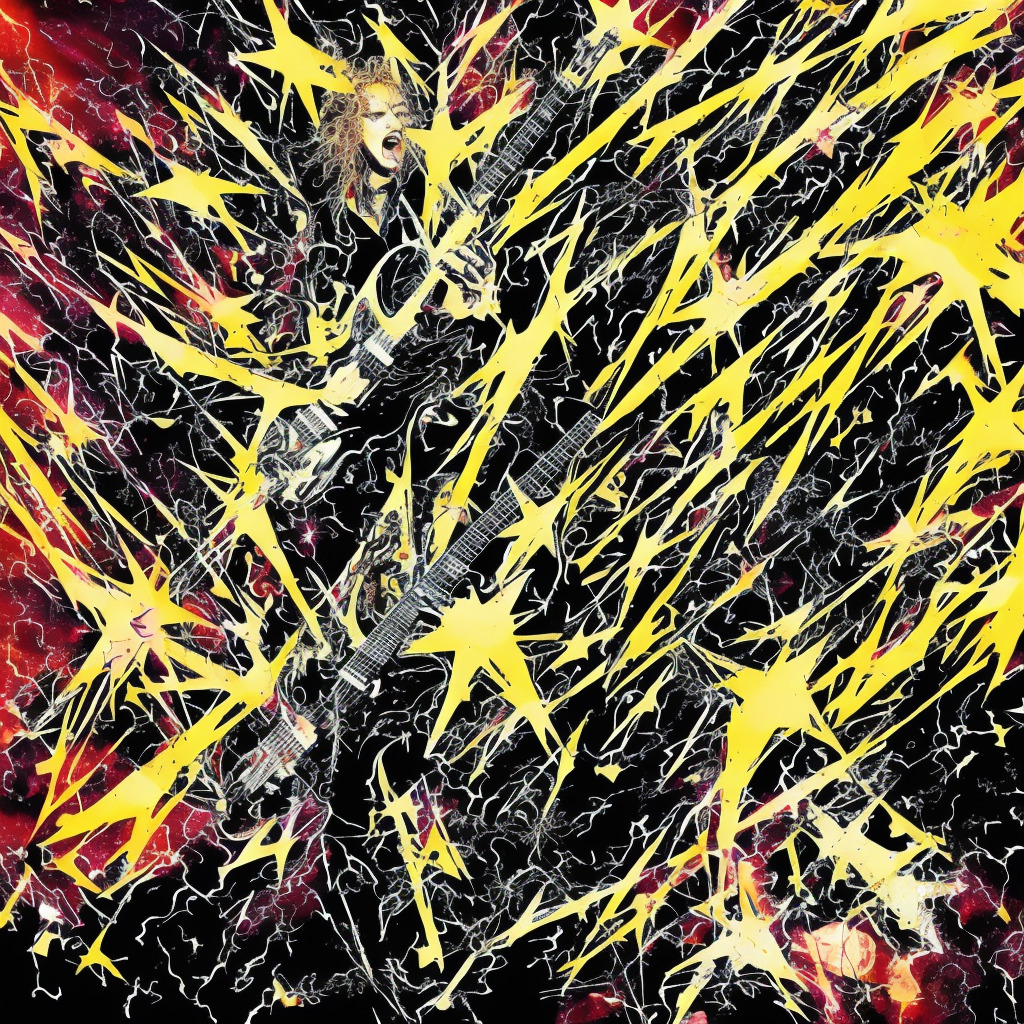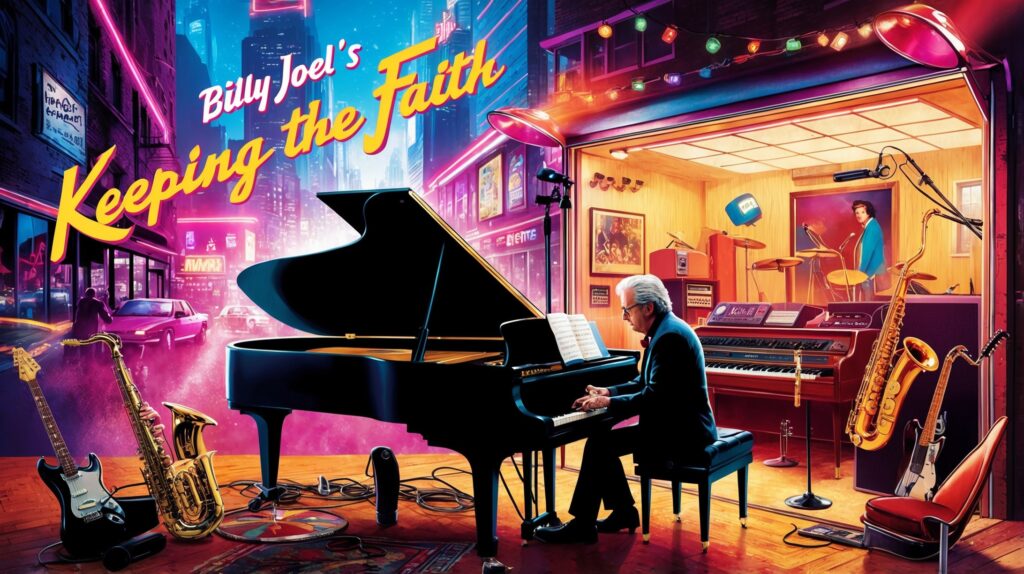Bon Jovi: Rock Icons with a Flair for Storytelling
Explore the rise of Bon Jovi in the 1980s, their creative process, and how “Bad Medicine” exemplifies their signature style and impact on rock music.
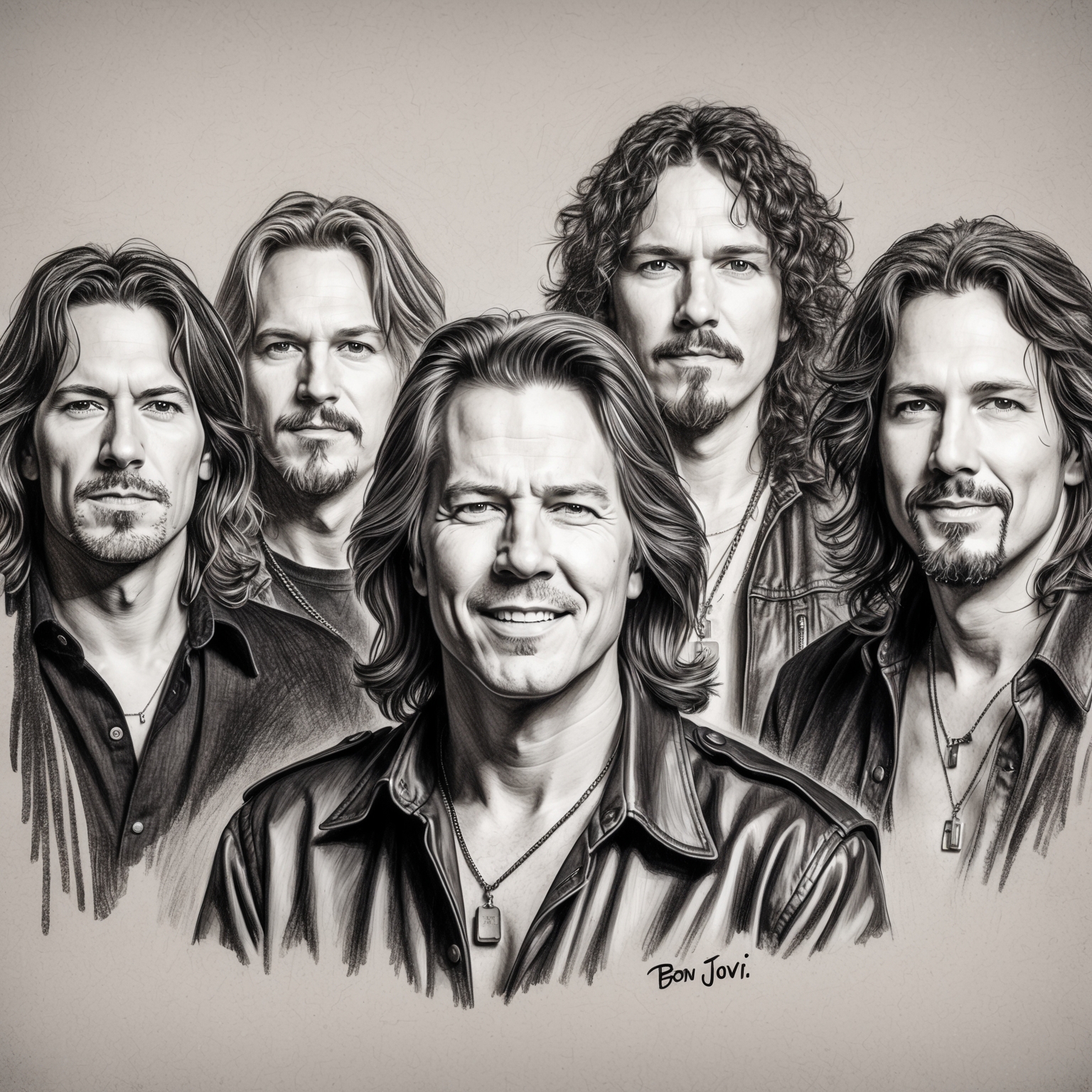
Bon Jovi emerged on the 1980s rock scene as a band with a knack for stirring anthems and poignant ballads, and “Bad Medicine” has remained a testament to their signature style. Released in 1988 as a part of their fourth studio album, New Jersey, the track showcases their ability to blend catchy hooks with relatable themes—a hallmark that has cemented their place in rock history. At a time when hair bands were dominating the airwaves, Bon Jovi stood out with their melodic sensibility and versatile sound, skillfully avoiding the limitations often associated with the genre.
Formed in 1983, the band was led by charismatic frontman Jon Bon Jovi, who was known not just for his vocal prowess, but also for his business acumen and relentless ambition. The original lineup included the virtuosic guitarist Richie Sambora, keyboardist David Bryan, drummer Tico Torres, and bassist Alec John Such. Together, they created a sound that was arenas ready—capable of filling stadiums worldwide with electrifying performances and heartfelt narratives.
The mid to late 1980s marked a golden era for Bon Jovi, as they churned out hit after hit, solidifying their standing as global rock superstars. “Bad Medicine” exemplifies the band’s synergistic collaboration process, with songwriting contributions from novelist and music producer Desmond Child. His partnership not only brought out a lyrical sharpness but also ensured a polished production that resonated deeply with the audience. At its core, “Bad Medicine” reflects the band’s knack for intertwining personal emotion with broad appeal—a quality that has made their songs timeless.
The Minds Behind ‘Bad Medicine’: Richie Sambora and Desmond Child
Richie Sambora and Desmond Child, the masterminds behind Bon Jovi’s ‘Bad Medicine’, combine their musical prowess to create a timeless rock anthem. Sambora’s blues-inspired guitar work and Child’s knack for catchy songs produce an unforgettable track.
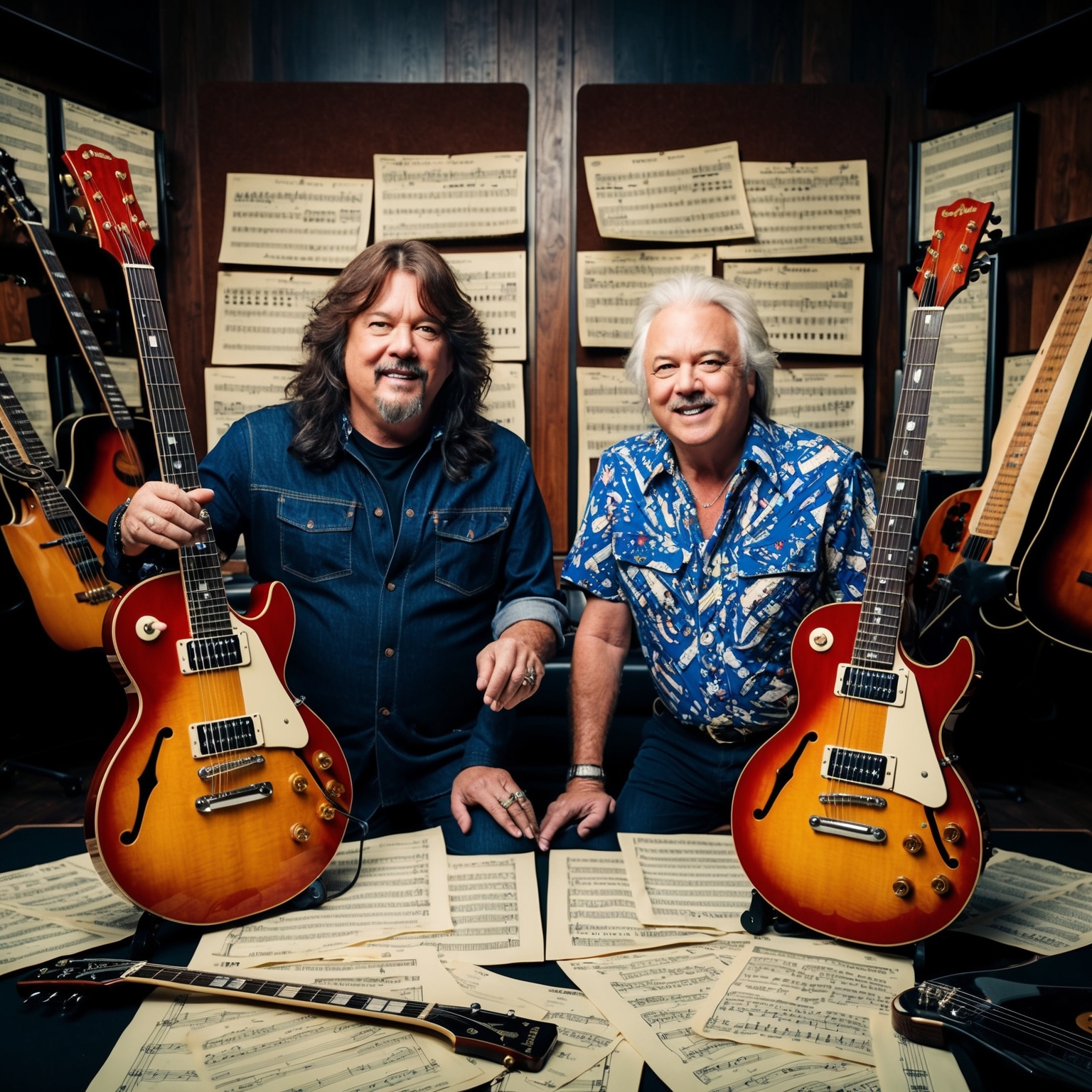
Richie Sambora and Desmond Child are the creative forces behind the infectious energy of Bon Jovi’s ‘Bad Medicine’. Each brought a wealth of experience and a unique touch to the composition that made this track a classic hit. Born in Perth Amboy, New Jersey, Sambora emerged onto the music scene with great determination and talent. Inspired by blues legends and fueled by rock ‘n’ roll passion, Sambora’s signature guitar style became a defining element of Bon Jovi’s sound. As the band’s lead guitarist and a principal songwriter, his influence permeated throughout their music, adding a robust rock dynamic to their tracks. Meanwhile, Desmond Child, a celebrated songwriter from Gainesville, Florida, built a formidable career penning hits for various artists across genres. Desmond’s ability to craft memorable hooks and anthemic choruses made him a sought-after collaborator in the music industry. Musical style is where these composers truly shine. Sambora’s exceptional guitar work is known for its blend of melodicism and technical prowess, borrowing influences from blues, hard rock, and classical music. His strikes of passion and charisma are evident in tracks like ‘Bad Medicine,’ emphasizing the song’s vivacious energy. Desmond Child’s songwriting, on the other hand, is characterized by its catchy melodies and powerful choruses. Drawing influences from rock, pop, and even Latin rhythms, Child’s versatile style perfectly complements Sambora’s guitar prowess. This fusion of their unique influences created a dynamic sound palette that contributed significantly to the song’s appeal and longevity. In terms of collaborations and partnerships, Sambora and Child have a history that dates back to the mid-1980s, working closely with Jon Bon Jovi to craft hits that became staples in rock history. It was their ability to merge rock’s raw essence with mainstream appeal that made their collaborations noteworthy. Not only did their partnership yield chart-topping successes, but it also solidified Bon Jovi’s place as rock royalty. With ‘Bad Medicine’, their partnership manifested into a track that was both musically and lyrically arresting, capturing the hearts of audiences worldwide.
Honors, Covers, and Cultural Impressions
Explore the enduring appeal of Bon Jovi’s “Bad Medicine,” including its popular covers and cultural appearances.

“Bad Medicine,” a standout track from Bon Jovi’s celebrated album New Jersey, holds a distinct place not just in arenas and stages worldwide but also in the annals of music accolade history. Although the track itself did not clinch any major awards, its enduring popularity and presence establish it as a hit both among fans and critics. Known for its irresistible energy and catchy hooks, the song climbed the charts impressively upon release and continues to be a staple at live performances.
Covers and renditions of the song speak to its universal appeal. Numerous artists have tried their hand at capturing the essence of “Bad Medicine.” Among notable covers are performances by other rock bands who sought to channel the same vigor and high-octane performance of Bon Jovi. These covers, whether found in live tributes or recorded sessions, often try to stay true to the original’s electric atmosphere while adding a personal touch from the covering artist.
Beyond just the world of music, “Bad Medicine” has made its way into various corners of popular culture. The song’s inclusion in TV shows and movies speaks volumes about its enduring nature and cross-generational appeal. Frequently featured in media as a backdrop for dynamic and engaging scenes, it underscores the song’s thematic relevance. “Bad Medicine” has arguably taken on a life of its own, transcending its original release and embedding itself in the fabric of music history.
Climbing the Charts: The Triumph of ‘Bad Medicine’
Discover how Bon Jovi’s ‘Bad Medicine’ climbed the charts to become a global rock anthem, cementing itself as a defining track of the late 1980s and influencing the band’s illustrious career.
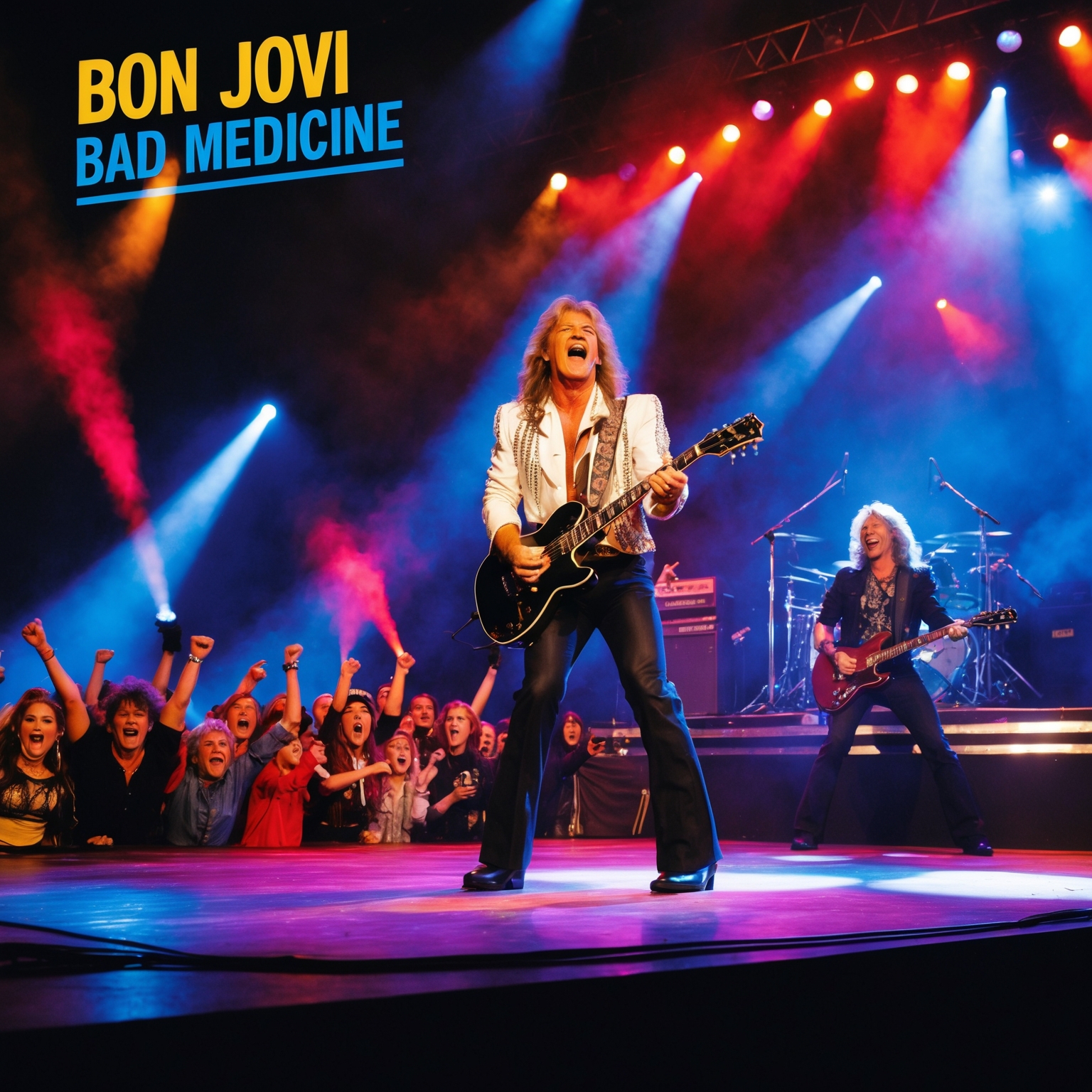
‘Bad Medicine’ by Bon Jovi, released in 1988, is a quintessential rock anthem that cemented its place in the annals of music history by achieving significant chart success. The track debuted at an impressive position on numerous international charts, and its powerful melody combined with unforgettable lyrics propelled it to the top. In the United States, it boldly peaked at number one on the Billboard Hot 100, marking a significant achievement for the band.
The song’s chart performance was not just restricted to the United States. It also enjoyed considerable success in Canada, where it reached a prominent spot on the charts, and similarly in the UK, Australia, and several other countries. What makes ‘Bad Medicine’s’ achievement remarkable is the competitive music landscape of the late 1980s, where it stood toe-to-toe with numerous other iconic tracks of its era. The ability to maintain a continuous presence in the top positions for several weeks was a testament to its enduring appeal and energetic vibe.
This hit single was not a standalone success but rather a part of a series of chart-toppers for Bon Jovi. Preceded by other hits from their ‘New Jersey’ album, ‘Bad Medicine’ acted as a potent follow-up, reaffirming the band’s knack for crafting melodies that resonate with mass audiences. Its success helped further propel Bon Jovi into the music stratosphere, ensuring their place among rock legends and bolstering their subsequent songs and albums’ popularity. In essence, the song’s success was not just a peak moment but rather a defining point that influenced the trajectory of Bon Jovi’s career, affirming their status as rock royalty.
Additionally, the label’s strategic marketing approach played a significant role in ‘Bad Medicine’s’ success. A combination of music video rotation on platforms such as MTV and live performances on popular TV shows helped amplify its reach. Public and critical reception was overwhelmingly positive, with the track lauded for its energetic composition and Jon Bon Jovi’s charismatic vocal delivery. Critics praised its catchy chorus and vibrant production, which further fueled its staying power in the charts.
Beyond the numbers, ‘Bad Medicine’ has left an indelible mark on pop culture. Often hailed as an anthem of the late 80s, it continues to be featured in movies, TV shows, and even contemporary playlists, ensuring its legacy endures. On streaming platforms, the track continues to gather impressive numbers, frequently included in rock-themed playlists and experiencing consistent plays from both old fans and new listeners alike.
Visual Dynamism: Exploring the ‘Bad Medicine’ Music Video
The ‘Bad Medicine’ music video embodies the exhilarating essence of a live Bon Jovi performance, blending cinematic flair with rock and roll dynamism, largely due to Wayne Isham’s directorial prowess.

The ‘Bad Medicine’ music video by Bon Jovi is a high-energy visual experience that perfectly encapsulates the band’s electrifying stage presence and charismatic appeal. Released in 1988, the video was directed by the acclaimed Wayne Isham, known for his work with other rock legends. The video begins with a playful twist – fans calling out for Bon Jovi at a concert, setting a lively tone for what’s to come. As the music kicks in, we are immersed in a spirited live performance that blends concert energy with cinematic flair, drawing viewers into the electric atmosphere that Bon Jovi is famous for.
The themes and visuals of the ‘Bad Medicine’ music video revolve around the exhilaration of live music performance, underscored by the iconic glam rock aesthetics of the late 80s. The choice to feature a live-concert setup emphasizes the song’s raw energy and connection with fans. Vibrant lighting, dynamic camera angles, and quick cuts between audience reactions and on-stage antics capture the essence of Bon Jovi’s rock and roll persona. The video further elevates the song’s appeal by vividly bringing the concert experience to screens, turning it into a visual anthem of rock exuberance.
Critically, the music video for ‘Bad Medicine’ was well received, with praise for its ability to convey the gripping live-performance vibe of the band. Directed by Wayne Isham, who has an extensive resume of working with rock icons, the video features captivating cameos from various fans, showcasing an inclusive approach that highlights Bon Jovi’s strong relationship with its audience. While there are no celebrity cameos per se, the presence of John Taylor from Duran Duran, albeit briefly, added an element of star allure. His involvement with Isham brought a subtle intertextuality to the production, intertwining music video culture of the era.
Unraveling the Musical Architecture of ‘Bad Medicine’
Bad Medicine’ showcases Bon Jovi’s mastery in crafting rock anthems through its strong musical structure, engaging tempo, and skillful use of melody and harmony. With meticulous production by Bruce Fairbairn, the song reflects an evolution in the band’s sound.

‘Bad Medicine’ by Bon Jovi is a quintessential example of 1980s rock, characterized by its dynamic energy and infectious hooks. The song is composed in the key of D major, a choice that lends a bright and affirming quality to the overall sound. The chord structure is built around bold, engaging progressions typical of rock anthems from this era. The song maintains an upbeat tempo of approximately 120 beats per minute, propelling listeners forward with its relentless energy.
The melody in ‘Bad Medicine’ is catchy and memorable, driven by Jon Bon Jovi’s powerful vocal delivery. It blends seamlessly with harmony, effectively supported by Richie Sambora’s versatile guitar work. This harmony is further enriched by the use of backing vocals, a hallmark of Bon Jovi’s signature sound, which amplifies the anthem-like quality of the track. The rhythm section, anchored by Tico Torres’ robust drumming and Alec John Such’s bass lines, provides a solid, driving force throughout the song.
Instrumentation plays a pivotal role in crafting the unique sound of ‘Bad Medicine’. Besides the strong guitar riffs and hooks embellished with distortion and reverb effects, the inclusion of keyboards adds a layer of texture that complements the guitar and vocal interplay. The production work by Bruce Fairbairn is notable for its clarity and polish, capturing the exuberant spirit of Bon Jovi. Interestingly, the song was recorded at Little Mountain Sound Studios in Vancouver, renowned for producing some of the era’s seminal rock albums.
When placed within Bon Jovi’s discography, ‘Bad Medicine’ showcases a refined pop-rock sensibility that builds upon the foundations laid by their earlier works. Compared to songs from their previous album, ‘Slippery When Wet’, there is a noticeable evolution in sonic complexity and thematic depth. This track marked a peak in the band’s ability to blend hard rock with accessible pop elements, a skill that would continue to be a defining trait in their music.
Decoding the Emotional and Metaphorical Depths of ‘Bad Medicine’
Dive into Bon Jovi’s ‘Bad Medicine,’ a song that masterfully intertwines the themes of love and addiction using vivid metaphors and engaging storytelling. Understand how the narrative style and literary devices contribute to its timeless appeal.
Bad medicine is what I need
Oh, oh, oh, shake it up, just like bad medicine
There ain’t no doctor that can cure my disease
(Bad medicine)
I ain’t got a fever, I got a permanent disease
It’ll take more than a doctor to prescribe a remedy
I got lots of money, but it isn’t what I need
Gonna take more than a shot to get this poison out of me
And I got all the symptoms, count ’em one, two, three
First you need (That’s what you get for falling in love)
Then you bleed (You get a little and it’s never enough)
And then you’re on your knees
(That’s what you get for falling in love)
Now this boy’s addicted ’cause your kiss is the drug
Oh, oh, oh, your love is like bad medicine
Bad medicine is what I need
Oh, oh, oh, shake it up, just like bad medicine
There ain’t no doctor that can cure my disease
Bad, bad medicine
I don’t need no needle to be giving me a thrill
And I don’t need no anesthesia or a nurse to bring a pill
I got a dirty down addiction that doesn’t leave a track
I got a jones for your affection like a monkey on my back
…
******* This Lyrics is NOT for Commercial use *******
 Bon Jovi’s ‘Bad Medicine’ explores the complex interplay between love and addiction through vibrant metaphors and colorful storytelling. At its core, the song employs the metaphor of love being akin to ‘bad medicine’, encapsulating the simultaneous thrill and danger associated with romantic entanglements. This vivid depiction resonates with the listener’s understanding of love as both intoxicating and potentially destructive, a theme that echoed the free-spirited and sometimes reckless nature of the 1980s.
Bon Jovi’s ‘Bad Medicine’ explores the complex interplay between love and addiction through vibrant metaphors and colorful storytelling. At its core, the song employs the metaphor of love being akin to ‘bad medicine’, encapsulating the simultaneous thrill and danger associated with romantic entanglements. This vivid depiction resonates with the listener’s understanding of love as both intoxicating and potentially destructive, a theme that echoed the free-spirited and sometimes reckless nature of the 1980s.
Narratively, the lyrics unfold from a first-person perspective, immersing the listener in the protagonist’s struggle with love’s oppressive grip. Lines like ‘I ain’t got a fever, I got a permanent disease’ showcase a compelling story of enduring pain inflicted by love, transcending physical ailment into the realm of emotional suffering. Jon Bon Jovi’s delivery bolsters the song’s narrative impact, allowing listeners to empathize with the desperation and yearning expressed in the lyrics.
The song’s literary devices further underscore its themes; metaphors are prevalent throughout, as seen in references to ‘a dirty down addiction’ and ‘a monkey on my back.’ These vivid expressions paint a picture of a love that is both consuming and inescapable. Rhyme schemes contribute to the song’s catchiness, ensuring that its message lingers with the audience long after the music fades. By drawing parallels to other Bon Jovi hits like ‘You Give Love a Bad Name,’ the thematic continuity within Bon Jovi’s discography becomes apparent, deepening our appreciation for ‘Bad Medicine’ as a quintessential rock anthem with enduring emotional resonance.
🎸 Did you know? Bon Jovi’s Bad Medicine topped the charts in ’88 with a dose of rock that’s still addictive! 🎶🔥 #BonJovi #RockAnthem #80sHits #BadMedicinehttps://bit.ly/4dQHuTR https://bit.ly/4dQHuTR
Click to Tweet


